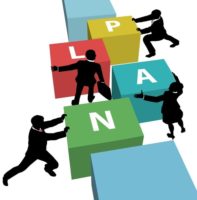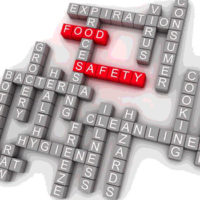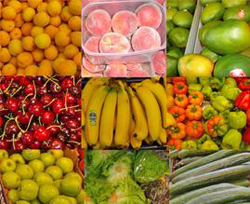 Although a nutritious and adequate food supply is vital to human survival, it can also pose a health risk from foodborne illnesses, which at times become fatal.
Although a nutritious and adequate food supply is vital to human survival, it can also pose a health risk from foodborne illnesses, which at times become fatal.
In addition to providing nutrients, food can also potentially be a source of harm to a consumer. Hazards associated with food include microbiological pathogens, naturally occurring toxins, allergens, intentional and unintentional additives, modified food components and agricultural chemicals. Hence, food safety is needed. Food safety is a scientific discipline describing the handling, preparation and storage of food in ways that prevent foodborne illness. This includes a number of routines that should be followed to avoid potentially severe health hazards. Effective food control systems are essential to protect the health and safety of consumers. They are also critical in enabling countries to assure the safety and quality of their foods entering international trade and to ensure that imported foods conform to national requirements. Food security can be defined as the notion that all people, especially the most vulnerable, have dignified and unthreatened access to the quality and quantity of culturally appropriate food that will fully support their physical, emotional and spiritual health. The new global environment for food trade places considerable obligations on both importing and exporting countries to strengthen their food safety systems and to implement and enforce risk-based food safety strategies. In a way, consumers are taking unprecedented interest in the way that food is produced, processed and marketed, and are increasingly calling for their governments to accept greater responsibility for food safety and consumer protection. This responsibility includes framing strategies to strengthen food control systems to protect public health, prevent fraud and deception, avoid food adulteration and facilitate trade. They will enable authorities to choose the most suitable options for their food control systems in terms of legislation, infrastructure and enforcement mechanisms.
The terms food safety and food quality sometimes appear confusing as food safety refers to all those hazards, whether chronic or acute, that may make food injurious to the health of the consumer. Food quality includes all other attributes that influence a product’s value to the consumer. This distinction between safety and quality has great implications for the formation of policy and influences the nature and content of the food control system most suited to meet predetermined objectives for the safety of country and fellow citizens.
The introduction of preventive approaches such as the Hazard Analysis and Critical Control Points (HACCP) in the year 1960 resulted in taking greater responsibility in managing the risk factors involved in food safety. It is a systematic preventive approach to food safety and that addresses physical, chemical and biological hazards as a means of prevention rather than finished product inspection. HACCP is used in the food industry to identify potential food safety hazards, so that key actions can be taken to reduce or eliminate the risk of the hazards being realized. The Codex Alimentarius Commission (CAC), an intergovernmental body, formed by a joint venture of the Food and Agriculture Organization and the World Health Organization in 1963, coordinates food standards at the international level. Its main objectives are to protect the health of consumers and ensure fair practices in food trade. The CAC has proved to be most successful in achieving international harmonization in food quality and safety requirements. Over 180 countries as members within its framework, and Codex standards serve as a benchmark for comparison of national sanitary and phytosanitary measures. While it is not compulsory for member states to apply Codex Standards, it is in their best interests to harmonize their national food standards with those elaborated by Codex. Apart from this, Agreement on the Application of Sanitary and Phytosanitary Measures entered into force with the establishment of the World Trade Organization on January 1, 1995, which concerns the application of food safety, and animal and plant health regulations. The Technical Barriers to Trade (TBT) Agreement requires that technical regulations on traditional quality factors, fraudulent practices, packaging, labeling, etc. imposed by countries will not be more restrictive on imported products than they are on products produced domestically. Both of these Agreements are relevant in understanding the requirements for food protection measures at the national level and the rules under which food is traded internationally.
In India, the introduction of The Food Safety and Standards Act (FSSA) in 2006 was a paradigm shift in the Indian regulatory scenario, giving rise to newer opportunities and rights to all the stakeholders for a dignified and regulated approach towards food safety.
In India, multiple regulations for food have been enacted at different times to supplement each other. This incremental approach has lead to incoherence and inconsistency in the food sector regulatory scenario. The FSSA is a new statute that integrates eight different existing food laws, and is a major transformation that ensures to bring paradigm shift in the food regulatory scenario of the country.
India, one of the members of the CAC, has taken care to observe the guidelines as proposed by CAC; the Ministry of Health and Family Welfare (India) has the primary responsibility for the determination of government policy relating to food standards and enforcement of food control, including a national position on various issues relating to Codex. FSSA has set up the National Codex Committee and various shadow committees to review the agenda of the CAC, and regulate and check manufacturing, processing, distribution, sale and import of food.
This integrated food law covers over 16 laws that work as the final check for meeting the standards of European Union and other Western countries.
Role of Technology
Food security is a fundamental need, which goes along with technology. Implementation of customized, secured and layered technology not only enhances efficiency in production but also ensures safety and security for both products and people, by meeting the challenges that the industry faces every day.
With increasing awareness of food safety issues and globalization of the food chain, it is the common concern of all the stakeholders for demanding and formulating effective ways to ensure safer food. The focus for manufacturers is shifting from response to prevention, and the need to optimize product quality and minimize foodborne hazards across production and the supply chain is greater than ever before.
Food safety cannot be defined without traceability. In the entire food chain, the traceability plays important role specifically when it comes to the recall process. In this context, the present article shows how to improve and accelerate the recall process effectively and efficiently in a timely manner.
The recall of an entire batch of product suspected to be unsafe is not only a Herculean task for the authority but also a huge loss to the manufacturer and others involved in the supply chain. Here the role of technology is important as the introduction of a code (secured quick response code or SQR code) with all the traceability components encoded in it along in real time, which can facilitate the smooth recall with minimizing recall size, which is otherwise very sporadic in nature.
 A Glimpse of the Technology
A Glimpse of the Technology
In the SQR code, some preferred data (known as private data) can be encoded with a security password and can only be scanned and read by special password-protected scanners, whereas public data can be read and decrypted by normal QR code-readable scanners and mobile phones. The application of this code is tremendous in protecting every aspect of business and financial secrecy. It is one of the unique instruments in combating counterfeit and deserves application where high-level security is a demand.
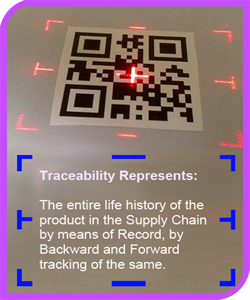 Process and Procedure
Process and Procedure
The SQR code, printed in the product in the labeling process, passes through all processes in the production line, packaging and distribution, with all the required data at each step with a link to the previous record. At each stage, the database is upgraded with the added information and the server is simultaneously upgraded with the additional information. This process of building up the record helps in every aspect of industry affairs, starting from raw material tracking, production record keeping, monitoring of the supply chain, warehouse record keeping, efficient dispatch and most facilitating the recall process. The data can track the product both downstream and upstream from any point in the path.
The primary advantage of printing this code along with all other labeling information is that it facilitates traceability both downstream and upstream in the supply chain, which can minimize recall costs significantly with a decided time line and efficient documentation process, and robust database. Being able to determine which products need to be recalled allows limiting the scope of the recall. If specific affected products cannot be identified, then the scope of the recall must be broadened, often recalling more products than necessary, resulting in greater financial losses. If the products are incorrectly identified, another recall may be necessary.
The secondary advantage is the authentication of the product and confirmation of ownership. The visibility of the code and its subsequent analysis can protect manufacturers, authenticating their product from the array of counterfeit and look-alike items. This authentication process becomes a boon for the manufacturers and distributors, eliminating legal complications (both civil and criminal) in cases of complaints.
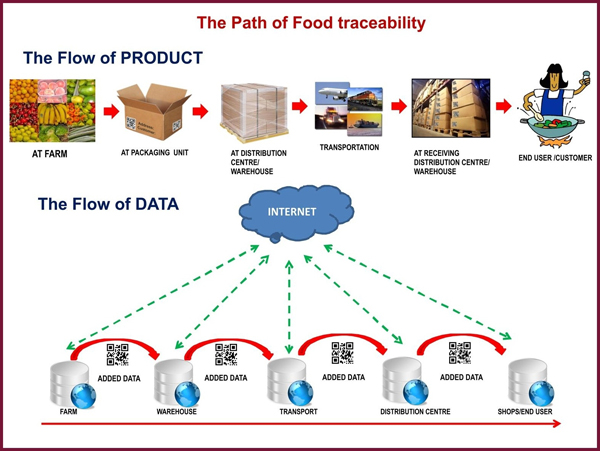 Facilitating Traceability in the Supply Chain
Facilitating Traceability in the Supply Chain
Confidence in the safety and integrity of the food supply is an important requirement for consumers. As no mandatory activity of this nature can achieve its objectives fully without the cooperation and active participation of all stakeholders, for example, farmers, industry and consumers, it is important to have the traceability concept from farm to fork.
The basic characteristics of food traceability is identification of all the food ingredients and products at different stages of the process (upstream) and distribution in the supply chain (downstream). For products, it creates a link between materials, their origin and processing, distribution and location after delivery. For data, it relates the calculations and data generated through a quality loop and may link these back to quality requirements. During calibration, it relates measuring equipment to national, international or primary standards, to basic physical constants, properties or reference materials. In IT and programming, it relates design and implementation processes back to the requirements for a system.
Interest of Stakeholders
Consumers gain hidden benefits from most traceability systems, that is, more effective achievement of food safety and an increased effectiveness of recall information. The following benefits arise from recall effectiveness:
• Protection of food safety by effective product recall, in the case of an emergency.
• Enable the avoidance of specific foods and food ingredients easily, whether because of allergy, food intolerance or lifestyle choice.
• Enable real choice to be exercised between food produced in different ways.
The authorities, as part of the system, benefit from traceability by gaining consumer confidence, in addition to the following:
• Protection of public health through the withdrawal of food products from sale in the recall process
• Prevention of fraud where food analysis is insufficient to support authenticity.
The manufacturer, as an integral part of the traceability systems, benefits in the following ways:
•Compliance with relevant legislation
•Ability to take prompt action to remove products from sale and protect brand reputation through a failure in product quality or food safety incident)
•Ability to minimize the size of any withdrawal and hence the costs incurred in recovering, disposing or reconditioning products already placed on the market.
•Ability to diagnose problems in production and pass on liability where relevant.
•Ability to create identity preserved non-genetically modified sources of soya and other ingredients.
•Ability to minimize the spread of any contagious disease amongst livestock.
•Ability to protect the food chain against the effects of animal disease.
•Ability to assure meat and meat products and maintain markets and consumer confidence.
•Ability to create differentiated products in the market place because of the way they have been produced.
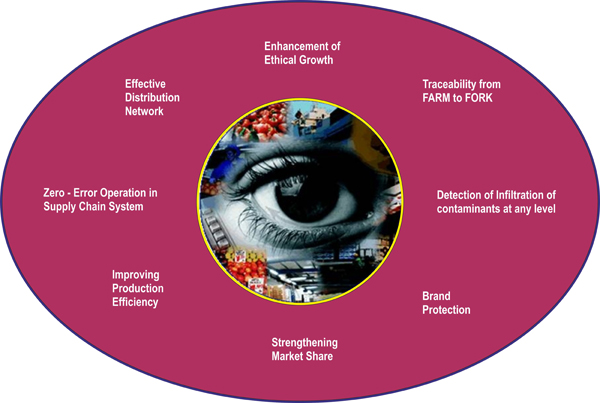 Linking Identification and Information
Linking Identification and Information
Product withdrawal and recall systems only require traceability in the part of the chain from the production step to the consumer, but complaints must be checked with raw material traceback to the supplier to improve transparency, rectify fault, avoid reoccurrence and assist in placing the responsibility and liability. Hence, it is a closely knit network and system. At each stage, the data can be integrated to an enterprise resource planning system maintained with each stakeholder and interlinked for better overview.
Costs Involved in Traceability
The cost of implementation of traceability systems is likely to vary enormously between businesses, depending on the type of technology adopted, the amount of information required to be stored and the complexity of the food chain. It is likely that systems will be introduced most rapidly where commensurate benefits in logistics, process control, etc. also occur for the business, or where market share would be jeopardized without the introduction of such systems. It may also be that minor upgrades of an existing system can take care of the entire traceability procedure.
It is clear that traceability comes at a cost. But the costs of not having it, or having inefficient systems in place may have adverse and severe effects on all the stakeholders and the food industry as a whole.
Legal Subsidiary
By and large, traceability can shield any organization form legal complexity and claims. For the government and regulatory authorities, it’s a boon. The regulatory authorities can enforce obligatory specific features like private data in every package of the product, along with unique product identification codes, batch numbers, expiration dates and serial numbers at different stage of packaging. This will facilitate the obligatory audit by the manufacturer to ensure reliability in the supply chain and internal restructuring for efficient and effective solutions. It can help to challenge counterfeiters, preventing revenue leakage and providing 100% accurate supervisory control with existing labor, which will surely rewrite the supply chain management system. It complies with clauses of the Global GS1 standard as well.
Conclusion
If managed poorly, change will wreak havoc on even the most talented and experienced development teams. If managed skillfully, using tools like traceability, teams are better equipped to assess the impact of change, track full product histories, keep everyone in sync and consistently improve the quality of the products being built—every project, every release. Technology cannot stand alone in the way of implementation. It also requires equal involvement of the food industry, law enforcement, the legal system, consumer forums and all tangible authorities involved at every level. It requires respect for each institution, respect for our society, and respect for our laws and respect for life.
For more information, please visit www.mmtechnologiesindia.com
Get our eMagazine delivered directly to your inbox
Stay in the know on the latest science-based solutions for food safety.
SUBSCRIBE TODAY!Copyright ©2024. All Rights Reserved BNP Media.
Design, CMS, Hosting & Web Development :: ePublishing


